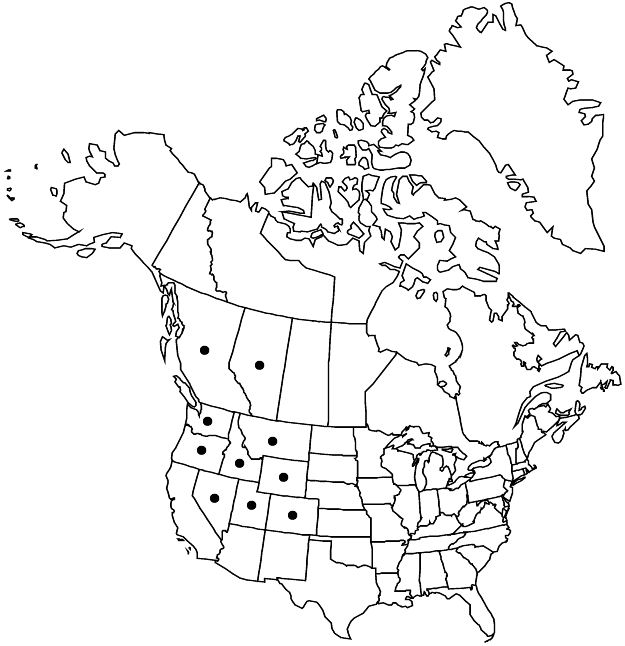Difference between revisions of "Physocarpus malvaceus"
Revis. Gen. Pl. 1: 219. 1891.
FNA>Volume Importer |
FNA>Volume Importer |
||
| Line 15: | Line 15: | ||
|name=Neillia malvacea | |name=Neillia malvacea | ||
|authority=Greene | |authority=Greene | ||
| + | |rank=species | ||
|publication_title=Pittonia | |publication_title=Pittonia | ||
|publication_place=2: 30. 1889 | |publication_place=2: 30. 1889 | ||
| Line 21: | Line 22: | ||
|name=Opulaster pauciflorus | |name=Opulaster pauciflorus | ||
|authority=(Torrey & A. Gray) A. Heller | |authority=(Torrey & A. Gray) A. Heller | ||
| + | |rank=species | ||
}} {{Treatment/ID/Synonym | }} {{Treatment/ID/Synonym | ||
|name=Physocarpus pauciflorus | |name=Physocarpus pauciflorus | ||
|authority=(Torrey & A. Gray) Piper | |authority=(Torrey & A. Gray) Piper | ||
| + | |rank=species | ||
}} | }} | ||
|hierarchy=Rosaceae;Rosaceae subfam. Amygdaloideae;Rosaceae tribe Neillieae;Physocarpus;Physocarpus malvaceus | |hierarchy=Rosaceae;Rosaceae subfam. Amygdaloideae;Rosaceae tribe Neillieae;Physocarpus;Physocarpus malvaceus | ||
| Line 48: | Line 51: | ||
-->{{#Taxon: | -->{{#Taxon: | ||
name=Physocarpus malvaceus | name=Physocarpus malvaceus | ||
| − | |||
|authority=(Greene) Kuntze | |authority=(Greene) Kuntze | ||
|rank=species | |rank=species | ||
| Line 63: | Line 65: | ||
|publication year=1891 | |publication year=1891 | ||
|special status=Endemic | |special status=Endemic | ||
| − | |source xml=https://jpend@bitbucket.org/aafc-mbb/fna-data-curation.git/src/ | + | |source xml=https://jpend@bitbucket.org/aafc-mbb/fna-data-curation.git/src/f50eec43f223ca0e34566be0b046453a0960e173/coarse_grained_fna_xml/V9/V9_575.xml |
|subfamily=Rosaceae subfam. Amygdaloideae | |subfamily=Rosaceae subfam. Amygdaloideae | ||
|tribe=Rosaceae tribe Neillieae | |tribe=Rosaceae tribe Neillieae | ||
Revision as of 22:42, 16 December 2019
Shrubs, 20 dm. Stems spreading, brown becoming grayish black, glabrous or finely stellate-hairy. Leaves: stipules oblong to elliptic or obovate, 6 × 2.5 mm, base broad, apex rounded and erose to apiculate or acute; petiole 1–2.5(–3) cm; blade broadly ovate to orbiculate, 2–6 × 2.5–6 cm, sometimes wider than long, base truncate to slightly cordate, 3- or 5-lobed, clefts between lobes may be shallow to deep, margins doubly crenate to doubly serrate, apex rounded, obtuse, or acute, surfaces glabrous or sparsely stellate-hairy (more so on abaxial veins). Inflorescences 15–20-flowered, fairly dense, hemispheric racemes, 2.5–4 cm diam.; bracts narrowly obovate to spatulate, 4.5 mm, apex erose or acute. Pedicels 8–15 mm, densely stellate-hairy. Flowers 5–8 mm diam.; hypanthium campanulate, 1.5–2 mm, densely stellate-hairy; sepals triangular to ovate, 2–3 mm, apex gland-tipped, surfaces densely stellate-hairy; petals white, broadly elliptic to obovate or orbiculate, 4.5 × 4.5 mm; stamens ca. 30, equal to or slightly exceeding petals; carpels 2(3), connate at least 1/2 their lengths, densely stellate-hairy. Follicles 2(3), ovoid, flattened, 2.5 mm (lengths not exceeding sepals), keeled apically, densely stellate-hairy, hairs white; styles 2.5–3 mm. Seeds 1 or 2, pyriform, 1.5 mm.
Phenology: Flowering May–Jul; fruiting Aug.
Habitat: Rocky canyon slopes and cliffs, open grassy slopes, dry open forests among Pinus, Juniperus, Pseudotsuga, Picea, and Populus
Elevation: 500–2800 m
Distribution

Alta., B.C., Colo., Idaho, Mont., Nev., Oreg., Utah, Wash., Wyo.
Discussion
Physocarpus malvaceus deserves to be more widely cultivated.
Selected References
None.